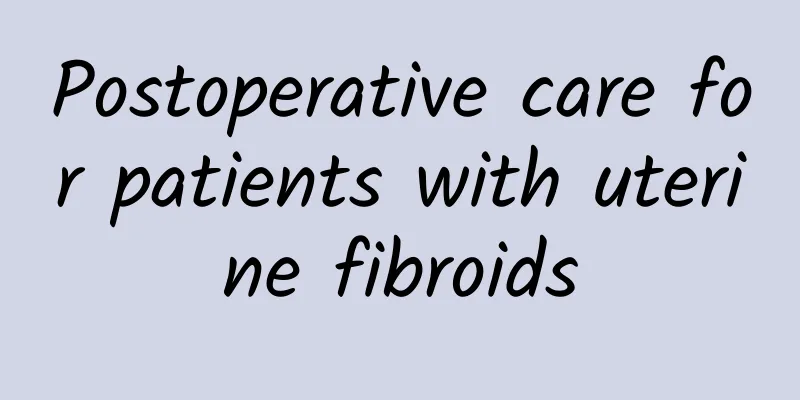Postoperative care for patients with uterine fibroids

|
Uterine fibroids are a common and frequently occurring disease among women, also known as uterine leiomyoma. They are common in women aged 30 to 50 and are relatively rare in those under 20 years old. If patients undergo surgical treatment, they need to pay attention to appropriate postoperative care to consolidate the therapeutic effect and promote recovery. 1. Take targeted maintenance measures according to the procedure First of all, it is necessary to determine the nature of the patient's surgery, whether the patient has undergone myomectomy or hysterectomy. If it is a myomectomy, the surgical wound is small, the bleeding is small, and recovery is relatively easy. If it is a hysterectomy, the patient's wound is large, the amount of bleeding is large, the damage to the patient's body is greater, and the postoperative recovery time is longer. Generally speaking, a recovery period of 1-2 months is required, and more attention should be paid to maintenance. During the recovery period, patients should be careful not to get tired, not to get cold, and especially to rest. At the same time, attention should also be paid to nutritional intake. After exhausting, you should eat more high-protein, high-iron, and high-fiber foods, such as fish soup, green vegetables, etc. If you feel weak all over or have back pain after surgery, it is generally a manifestation of physical weakness after surgery. At this time, you should pay attention to rest and supplement nutrition. 2. Pay attention to psychological care The patient will be in severe pain on the day after the operation. At this time, the patient's family and medical staff need to care and comfort them to help them get through the most painful period. At the same time, good psychological care and a positive mental state can also promote the recovery of the disease. It should be noted that if the patient retains the uterus and has not yet reached menopause, she needs to continue taking medication for about half a year to control her menstruation. |
<<: Is there a direct relationship between cervical erosion and cervical cancer?
>>: How can women prevent uterine fibroids?
Recommend
What diseases can habitual miscarriage cause?
Habitual abortion is a common complication of pre...
Women with heavy menstruation should not be careless, beware of three diseases that are the real culprit
The normal menstrual volume for women is between ...
What are the consequences of eating crabs after abortion?
Eating crabs after an abortion may cause diarrhea...
What are the causes of cervical hypertrophy?
Cervical hypertrophy is a common gynecological di...
What causes uterine fibroids? Top 10 foods to avoid when you have uterine fibroids
What causes uterine fibroids? Uterine fibroids ar...
What are the consequences of ovulation bleeding after sex?
Having sex during ovulation bleeding may cause va...
Commonly used drugs for endometrial tuberculosis
In daily life, women should pay attention to the ...
What are the main points to pay attention to after painless abortion?
Generally speaking, painless abortion does not ca...
Can I eat fermented rice wine eggs during menstruation? It depends on the specific situation of menstruation
Whether you can eat fermented rice wine eggs duri...
What are the most common symptoms of irregular menstruation?
Irregular menstruation is becoming more and more ...
What causes uterine fibroids? Can an unreasonable diet also cause uterine fibroids?
1. Bad lifestyle Unhealthy female lifestyles can ...
Too fat to breathe? Gastric bypass surgery to lose weight and survive
Losing weight can not only get rid of excess fat,...
How long can you live after treatment of late-stage Bartholinitis?
In today's society, people live at a fast pac...
Can women with cervical erosion eat red dates? 6 things to note about cervical erosion
Cervical erosion is very common among women and i...
Which hospital is good for abortion?
Nowadays, many women who get pregnant unexpectedl...









